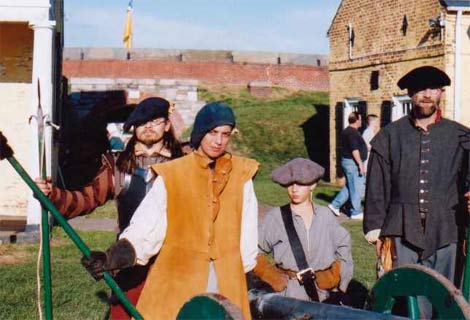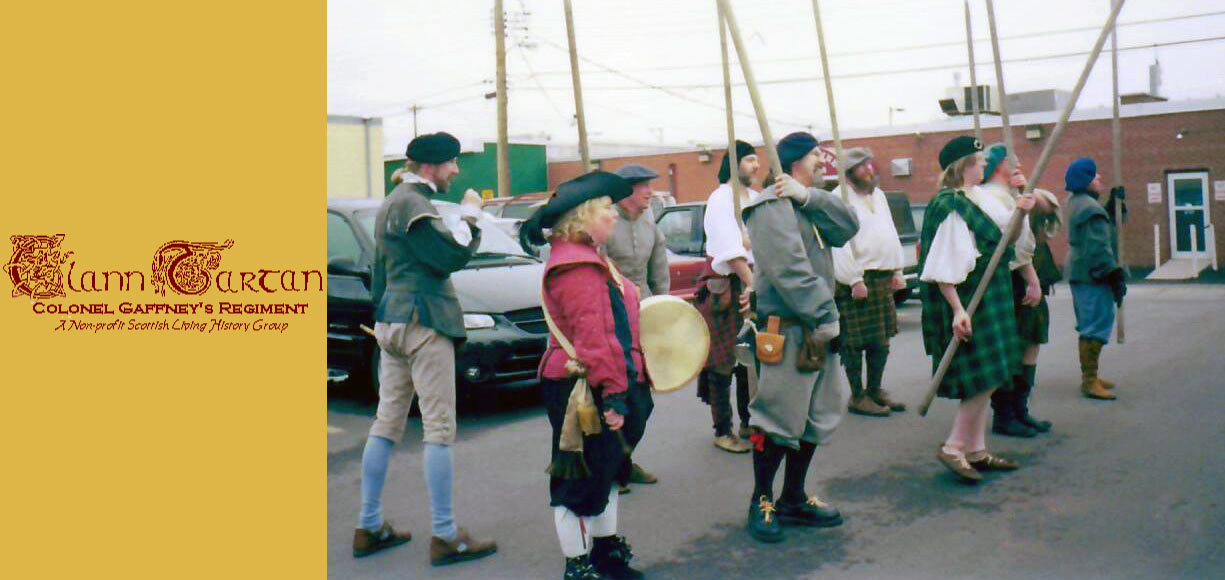Spectacles in the 17th Century
Periodically, eyeglasses come up in conversation within our group. The following article discusses period eyewear, and also provides sources where you can get your own.
Spectacles were invented in Italy by the 1280s - a result both of new translations of 10th/11th century Arabic works on optics and the birth of the modern scientific method in Europe. At first, they were riveted at the nose, and had to be held during use. By 1500, single-piece "bow frames" were developed, shortly to be mass-produced throughout Europe. These "bow frames" are what would be most common in our period, having gradually replaced riveted models by the early 17th century. Bow frames were either held like riveted spectacles, or stayed in place by being more or less wedged onto the nose (not unlike like the "Pince-Nezs" popularized by Teddy Roosevelt in the late 19th century). A clever development soon increased the comfort for the user. Ribbons with a weight at one end were tied onto each side of the frames. The ribbon passed over the top of the ear, and the weights hung down behind the ear, thus holding the frames on better. Or ribbons were looped around each ear with both ends tied to the frames. Temple bows were not added until the second quarter of the 18th century.
The Worshipful Company of Spectacle Makers (of London) was founded in 1629. A "worshipful" guild has a royal charter; an "honourable" guild does not. Before this, most spectacles worn in the British Isles were made in the Low Countries or the Germanies.
Spectacle frames were made of horn, bone, leather, wood, or rarely wire, and the lenses were almost always round. The period cases for them I have seen are mostly wood, leather, or tortoiseshell (presumably horn was used, as well).
 This photo is a typical pair of
17th century spectacles
with case from
the Pilgrim Hall Museum. Although lenses were developed for both farsightedness and nearsightedness well before 1630, bifocals were not invented by Dr. Benjamin Franklin until about 1780.
This photo is a typical pair of
17th century spectacles
with case from
the Pilgrim Hall Museum. Although lenses were developed for both farsightedness and nearsightedness well before 1630, bifocals were not invented by Dr. Benjamin Franklin until about 1780.
The lenses were hand ground until the 19th century, usually of glass, sometimes of much more expensive rock crystal. One who needed spectacles would go to the maker or seller and pick the pair that worked the best for them - not quite as scientific a system as nowadays, but it certainly worked.
You may ask how affordable they were in the time we represent. The answer, surprisingly, was quite. For example, a stone mason spent about two hours' wages on a pair around 1500 or so; this would mean that even a poorly paid laborer could afford a pair, using a couple days' pay at most. For what it is worth, there is some evidence that the London spectacle makers guild had a system set up to provide those in need with a free pair if they could not afford to pay for them.
There are a couple of 17th century pictures showing wandering spectacle sellers, one of which has the itinerant salesman offering his wares in a rural setting. And there is that lovely painting at the Minneapolis Institute of Arts showing a couple of soldiers gambling during the Thirty Years War; one of them is using spectacles ("The Gamblers" by Hendrick ter Brugghen, 1623).
Although I wouldn't want to ride a horse wearing a pair of spectacles unless they were tied on – and Lord knows I do need glasses - they can be most useful for reading and writing (if your character is literate) or doing crafts such as needlework or carving, regardless of class.
BIBLIOGRAPHY
The British Optical Association Museum has an online exhibit which includes photos of surviving spectacles, and period illustrations of spectacle salesmen, -
"Eyeglasses Through the Ages" has a lot of pictures of spectacles from the beginnings to the present http://www.antiquespectacles.com/history/ages/through_the_ages.htm
The Foundation of the American Academy of Ophthalmology has a short history of spectacles with a few pictures at http://www.aaofoundation.org/what/heritage/exhibits/online/spectacles
Hendrick ter Brugghen, "The Gamblers" 1623 can be viewed at the Minneapolis Institute of Arts, or at http://www.artsmia.org/viewer/detail.php?v=12&id;=1378
The Pilgrim Hall Museum in Plymouth MA is the source of the picture above of the leather wrapped horn spectacles with pine case (the leather helped prevent the spectacles sliding off). http://www.pilgrimhall.org/Specs.htm
Tunis, Edwin. Colonial Craftsmen and the Beginnings of American Industry. World Publishing Company, Cleveland and New York 1965, Has a section called “The Eyeglass Seller” pp 48 – 50, which not only gives a short history of spectacles from the 13th to 19th centuries, but also shows some of the lens-grinding tools used.
The Worshipful Company of Spectacle Makers has useful historical information http://www.spectaclemakers.com
SOURCES OF REPRODUCTION FRAMES (all are riveted, not bow frames - they'll certainly do for us. It is far better to have a pair a couple decades out of fashion than to ruin an otherwise good kit with a modern or even 18th century pair. There are three models which sell for under $30, which is pretty darned affordable.
James Townsend carries artificial bone (plastic) spectacles, currently on sale for $25 http://jas-townsend.com/product_info.php?cPath=46&products;_id=735
Medievaldesign has wooden and bone spectacles at 20 Euros and 150 Euros, respectively http://www.medievaldesign.com/miscellaneaeng.html
Sweetness and Light carries wooden and horn spectacles at 10 Pounds and 35 Pounds, respectively http://www.candlemaker.org.uk/personal.htm

